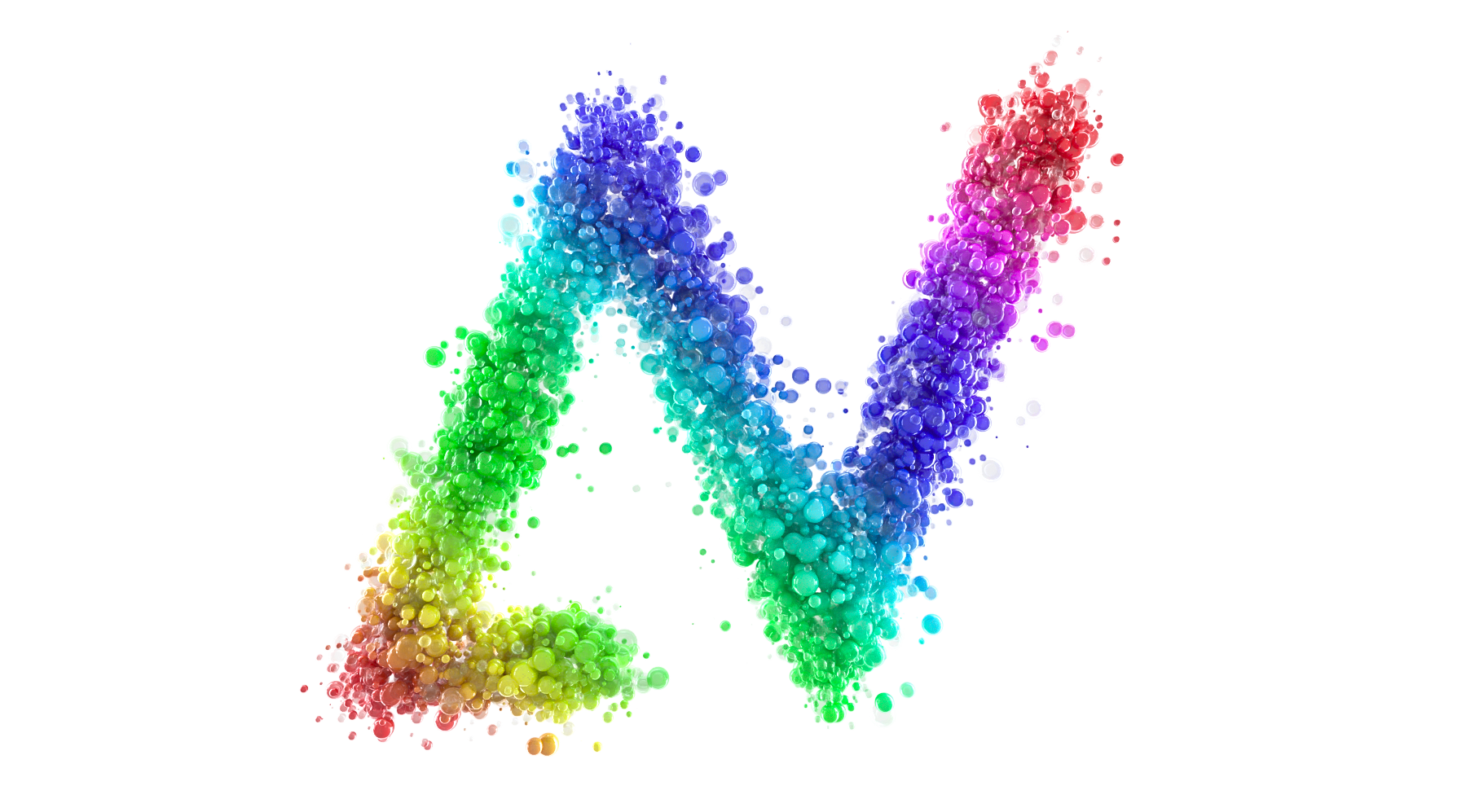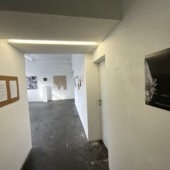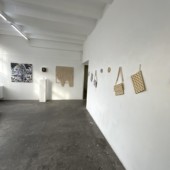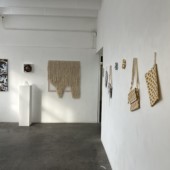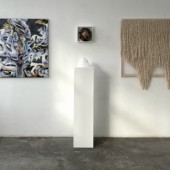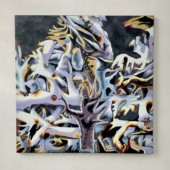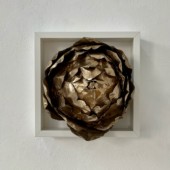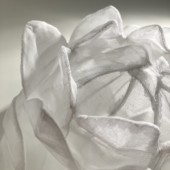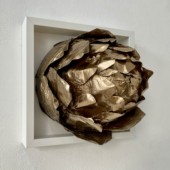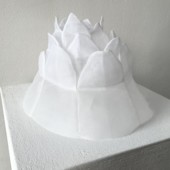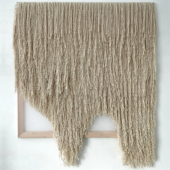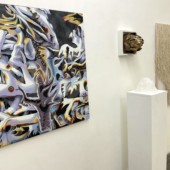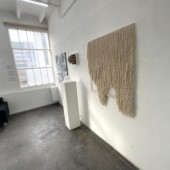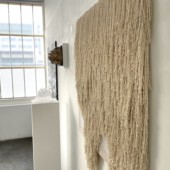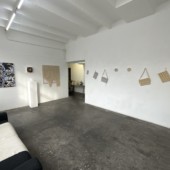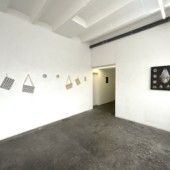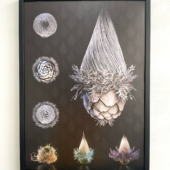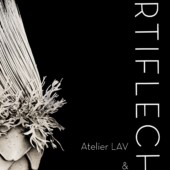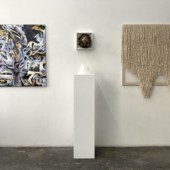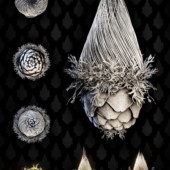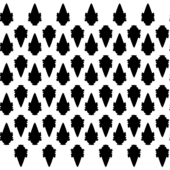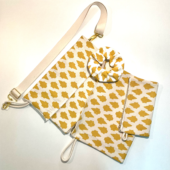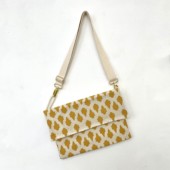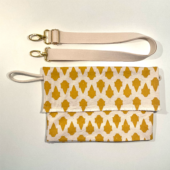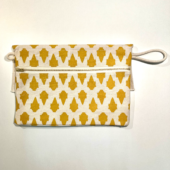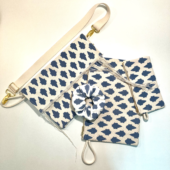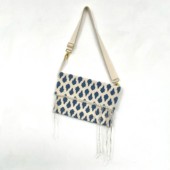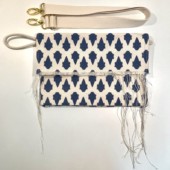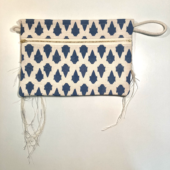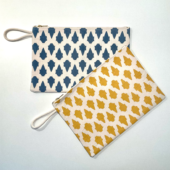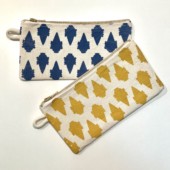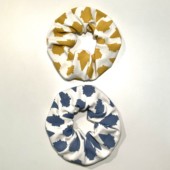ARTILICHEN
ARTILICHEN is a collaboration between Atelier LAV and Wolfgang Schwarz.
Throughout this project, the fascination with the unique characteristics, fantastic forms, and outstanding healing powers of the artichoke, lichen, and hedgehog beard spans all artistic works. These are three often underestimated superfoods that flourish here in Austria, and at the same time, three aesthetically outstanding representatives of their kind (plant, fungus, lichen).
The project begins with the DISCO LICHEN, oil and acrylic on canvas, which in its saturated form presents itself as an intense close-up. Next to it is the HEDGEHOG BEARD, a large textile piece made from over 750 meters of untreated cotton thread and some organdy. With the ARTICHOKE CROWN and the ARTICHOKE BRIDE, the artistic works of Atelier LAV culminate in an object duo that pays homage to the legendary artichoke in gold as well as organdy.
The central work of the exhibition is the creation of a new organic form, a mixture of all three organisms treated - the ARTILICHEN. This creation is intended to reflect the increasing artificial production of organic materials - whether through AI digitally or analogously through genetic engineering. Wolfgang Schwarz created the new organism as a 3D object in Cinema 4D. With several renderings, he stages the new organic form inspired by traditional sketches, for example by Ernst Haeckel.
As a transition into the artistically applied sphere, Atelier LAV created special textile pieces from a repeating pattern of the ARTILICHEN. The pattern was printed using screen printing on unbleached and undyed organic cotton fabric with pure natural colours. These textile pieces are absolute unique pieces and were completely plastic free, made from only a maximum of three materials: untreated cotton, metal, and natural colours. Atelier LAV used turmeric yellow and indigo blue as printing inks, representing the wonderful natural dyeing process with turmeric and indigo.
The finished textile works complete the circle of the exhibition: from the original idea of visual art, a new organic form grew, from which handmade, fairly produced unique pieces, textile wearable artworks, made from purely organic materials, emerged once again.
2024
Part of the exhibition ARTILICHEN with Wolfgang Schwarz at the exhibition space of Ateliers 33/2, Vienna
(see Art Spaces and List of Exhibitions)
About the LICHEN:
Lichen is a symbiotic association between one or more fungi (mycobionts) and one or more partners capable of converting light into chemical energy through photosynthesis (photobionts) – usually green algae or cyanobacteria (phycobionts or cyanobionts).
The characteristics of lichens are distinct from those of the organisms they compose. The typical growth forms of lichens emerge only in symbiosis, and therein they produce characteristic lichen acids.
There are over 25,000 known species of lichen worldwide. They are usually named after the fungus that forms them, as it is often the fungus that gives them their form and structure. In biological taxonomy, lichens are classified under fungi.
Lichens often serve as food and medicine. Many of them contain a wide variety of substances. For example, Iceland moss is used for coughs, oak moss as an antibiotic, and polysaccharides as anticancer agents. A specific lichen species (Dictyonema huaorani) is used by the Waorani shamans as a psychoactive substance. Furthermore, some lichens yield dyes (Roccella, Pertusaria corallina, Evernia, Pamelia, Usnea) or perfume components (tree moss, oak moss).
About the HEDGEHOG HERICIA:
Hedgehog Hericia (Hericium erinaceus), also known as monkey head mushroom and lion‘s mane, is a species of fungus in the order of agarics. The fruit body is beige, sometimes slightly reddish, and can reach sizes of up to 30 cm. The mushrooms are usually short-stemmed and 10 to 25 cm thick. The upper surface is fibrously torn. Soft, densely packed spines measuring 2 to 5 cm in length and 1.5 to 2 mm in thickness are found on the underside; their surface is frosted. The flesh is whitish and has a tough, somewhat fibrous texture. The spore powder is white.
Hedgehog Hericia is a widely distributed but rare fungus. It grows as a wound parasite on older deciduous trees (oaks, beeches) and prefers forests with high humidity.
The fungus contains an above-average amount of essential free amino acids (about 19%) and almost all that are necessary for humans. Traditionally (especially in TCM), it is used as a remedy for stomach and respiratory problems, nervous disorders, high cholesterol, cancer, and a weakened immune system. It also enhances cognitive functions in cases of dementia.
About the ARTICHOKE:
Artichokes (Cynara) are a genus of plants in the Asteraceae family. They are thistle-like, robust, herbaceous plants, which can be annual or perennial, reaching heights of 50 to 250 cm. The leaves are compound and have a spiny margin. The large, basket-shaped flower heads contain only tubular flowers. The numerous bracts are arranged in five to more than eight rows. The radially symmetrical tubular flowers are white, pink, or violet. The fruits are achenes, with more or less functional, parachute-like pappus consisting of three to seven rows of hairs fused at their base.
The most well-known species is Cynara cardunculus L., from which the two vegetable groups, artichoke and cardoon, have originated.
Artichokes are used as food and medicine. Besides the fleshy lower parts of the bracts, the bracts themselves (known as artichoke hearts) are also eaten. Smaller varieties of artichokes, harvested early, and the spineless Roman artichoke (Carciofo Romanesco) can be eaten whole.
Artichoke is rich in vitamins (B9, C, K, and other B vitamins). As a medicinal plant, it has an appetizing, digestive, and cholesterol-lowering effect. It contains cynarin, a bitter substance that stimulates liver metabolism. It contains polyphenols, flavonoids, caffeic acid derivatives, thereby improving sugar and fat metabolism. The cardiovascular and metabolic systems are also positively influenced by the artichoke. It activates and forms mitochondria, significantly improving overall health, quality of life, and well-being.
